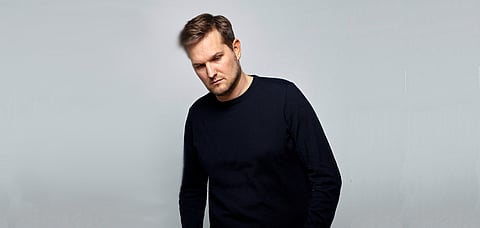
- Destinations
- Experiences
- Stay
- What's new
- Editor’s Picks
- Responsible Tourism
- CampaignsCampaigns
- Subscribe

As a person who works in the travel industry, the word combined with &lsquodesigner&rsquo seemed quite intriguing. Many questions came to mind when I saw Sebastian Herkner&rsquos symposium on the India Design ID 2020 schedule&mdashWhat does the job entail How does it factor into the work Where does the designer travel I found answers to some of these questions as Herkner spoke of his adventures in Taiwan and Senegal.
Brought up in Germany, Herkner's parents were religious and very enthusiastic about camping. As a result, he was exposed to the architecture of churches they came across on their journeys. This was the beginning of his interest in the field of design which later translated into a successful career. In 2006, he established his own studio, playing with traditional crafts and producing quality products for well-known brands. In fact, his iconic bell table won him the Red Dot Design Award in 2010.
Seeking a more detailed evaluation of his career, I caught up with Herkner for what turned out to be an insightful conversation.
Herkner lives in Offenbach in Germany which was once the home to a thriving leather industry. The loss of the art has influenced and impacted his introduction to design, with an emphasis on traditional crafts rather than trends. &ldquoWhen I started, crafts were not a subject at university. I still live in Offenbach which once had a thriving leather industry. Every family had a worker in the industry. It connected people. When it disappeared, there was a lot of unemployment.This was the reason I decided to focus on crafts. I learnt it from my grandparents. There was so much interest in crafting in their generation. I find that there is a certain purity (to it)."
Herkner says that craft is making a comeback now, with more people getting into it. "Some years back, people used to laugh if you said you were getting into crafts."
Travelling has unveiled new worlds that have allowed him to discover and explore traditional crafts of various countries. He admits to finding new techniques of weaving, rug making, and textiles, thanks to the exposure. During his symposium, he displays pictures of himself in Senegal, learning novel methods of dealing with clay. He has also been to India. &ldquoI took several hundred pictures in India&mdashof a stool, a chair, a rug," he smiles. "There is so much to see that is different. And I want to bring all those memories back to our home."
His travels have led him around the world exploring different cultures and meeting creative people. "In the end, we have the same idea of creativity but we have different backgrounds and cultures, and that makes it so interesting.&rdquo
And while a foreign trip is often dictated by a mix-matched itinerary pulled from typical tourist guides, Herkner keeps away from the mainstream, attempting to understand the culture at the grassroots. &ldquoIf I go to a country, I want to listen to the local music. (In India) I want to have an Indian breakfast and not my American-style breakfast in the hotel. I really want to experience all perspectives. Every day is different. When I travel, I ask people, &lsquoShow me your favourite places, your favourite shops. Not the ones for tourists, but show me where you go to buy your sponge or fabric.&rsquo Because I don&rsquot want to see touristy things. I think the most important thing is curiosity and to keep an open mind because you understand the beauty of the whole planet and the difference of cultures, religions, food, music, all of it&rdquo.
Herkner acknowledges that there's a lot more to explore, and every new destination offers something novel about a craft form. &ldquoCraft is something that is international. You have rug making in Colombia but you also have it here (India). But sometimes the way (method) is different or the pattern or the use of colour, so it has something to do with the culture. In India, there are many places I haven&rsquot been. Chandigarh is on the list because of the architecture&rdquo. He also hints at an interest in visiting Mumbai.
A rich travel portfolio has also humbled the designer. He says he knows travelling is a privilege and he is grateful for the life to which he has access. Most of all, he advocates the preservation of local culture. &ldquoIt&rsquos important to keep the origin and personal identity of a place in today&rsquos world where all destinations have started to look similar".
